Successful Permaculture Gardening for Beginners
What is Permaculture?
Permaculture gardening means understanding the basic permaculture principles, and how to design your garden to include these principles.
Some of you may or may not have heard about the concept of permaculture. If you live in Australia, it is probably more familiar to you than those living elsewhere, as this is where this type of organic gardening was first developed.
Permaculture was coined by Bill Mollison and David Holgrem, back in the 70's as an amalgamation of permanent agriculture. It was a way to sustainable agriculture, which included, recycling waste and turning it into compost, using natural pesticides and insecticides and working together with nature rather than working against it.
Bill Mollison was so despondent over the way man was destroying the earth, that it took him a trip into rain forests, where is suddenly dawned on him that this was a place where there was no interference from man, and yet everything worked holistically.
Everything worked in unison, everything existed and flourished, because it relied on something else within the system. For example, one of the keystones to Permaculture is that plants that need nitrogen for their survival are found in nature growing next to plants that release nitrogen into the soil. Therefore he thought, instead of planting vegetables in rows like soldiers, dousing them with chemical fertilizers, why didn't he try and replicate these natural conditions?
Permaculture Gardening for Beginners and the Key Principle - Work with Nature, Not against It.
For Bill Mollison, it was working with nature, rather than against it. It was creating food forests where trees and and vegetables grow together, where most of what is planted or built within the system has at least 3 different purposes. For example, a corn stalk can be used to produce corn, it can also be used to grow climbing beans up, and finally it can be used to feed the cattle when it is spent.In creating permaculture gardens the emphasis is on planting native trees and flowers. Things that are native to the area grow well, and need less water, so you are able to conserve water too.
There are some fundamental permaculture principles that are worth noting, so that perhaps you might think of converting your garden into something more sustainable.
Permaculture Gardening for Beginners and Being Energy Efficient
The first one is looking at where your house is situated to the rest of the land and be energy efficient in your garden design. In other words, what is the point of having a herb and veggie garden so far away from your kitchen back door so that when it comes to cooking time you can't be bothered to harvest that sprig of mint, or those ripe tomatoes. It would take too much energy to get there and back! Therefore the areas that you would be using the most, should be placed closest to the house. Each zone of use should be identified, and placed according to use until your furthest zone is the one you visit least.
Permaculture Gardening for Beginners and Maximizing what you Have
Look at what you have on your plot of land and determine how you can harvest what is already there to your advantage, or get rid of or minimize what is not. This is an extension of being energy efficient. Look at where the sun rises and sets to see where you will position your food garden. Look at prevailing winds. Are they so strong that you will need to grow a windbreaker? To you have a sunny wall that will be useful in the winter to grow some tender plants against? Where are the sheltered and shady spots that will be ideal for your shade loving plants?
Permaculture Gardening for Beginners and Multi-Purpose Thinking
Also maximize the uses for your structures that you place in the garden. I wrote earlier of the multiple uses of a corn stalk. However, one can look at architectural objects too. What about a trellis that you want to place in your garden to train a vine? Can it also be used to screen an unattractive view or your rubbish bins? Is is being used as a windbreak? Can the fruit that you grow feed your chickens as well as yourselves?
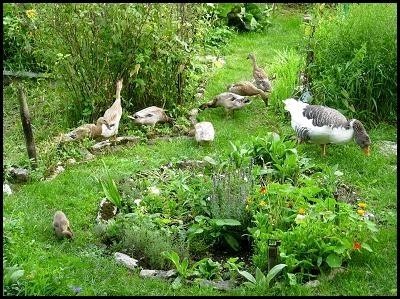
Permaculture Gardening for Beginners and The Benefits of Permaculture
Think about symbiosis and in your garden and how one species can benefit another or have multiple benefits and uses. Permaculture is really about integrating key elements in your garden so that there is a beneficial and useful relationship.
Ducks can be sent into your established veggie garden to eat all the slugs and snails. They also love flies and if you keep horses they are ideal fly catchers to have around. Put them into your orchard and they will clean up the fallen fruit and minimize the fruit flies. They will also benefit you in eggs and meat and good farmyard manure, which they will drop not just in their shelter for you to add to the compost heap later on, but also directly in your orchard and veggie garden without you having to do anything. Now that's being energy efficient! Having geese means that you have roving lawnmowers. Think of what you could do, instead of mowing the lawn on a Sunday afternoon!
PERMACULTURE PRINCIPLES: EVERYTHING NATURAL
Permaculture encourages organically grown and raised vegetables, fruit and livestock. Soils are fed with organic material; compost, blood and bone, seaweed, liquid manures, wood ash etc. All pesticides and insecticides are natural; neem, chili sprays, white oil etc. Everything is recycled and put back into the soil. Nitrogen-fixing legume cover crops are grown instead of using chemical fertilizers for adding nitrogen to the soil. Banana waste, hay and wood ash are used for potash. And finally, fish meal, and blood and bone, and raw sugar waste are added for natural phosphates.
PERMACULTURE PRINCIPLES: WASTE NOTHING
Finally, recycle, recycle, recycle. Grass clippings, (if you don't have geese), can be added to your compost bin, including prunings from soft woods, vegetables scraps that don't get to the chickens or ducks and newspapers that should be shredded. Hardwood cutting and prunings should be put through a mulching machine and spread around the garden to further encourage water pretension in the soil. Just don't put it down too thickly as it will prevent water from getting to your plants.
So, you can see that the concept of Permaculture is really more that just organic gardening. It is about sustainable growing, working with the ecology rather than against it. Trying to create an ecosystem in your own garden where everything is dependent and co-dependent on each other, working in a symbiotic way, and being as energy efficient and as eco-friendly as possible.
Learn Permaculture Design
There are so many facets to permaculture that the best thing you could do to learn more about permaculture design is to find a permaculture course near you. If you live in Australia, there are many courses available for permaculture design and also for learning the basics to this self-sufficient way of growing vegetables and fruit. However, there are now other horticultural centers operating in other countries too now. So you will need to do some research, but it shouldn't take you long before you find a course to your liking.Add your Own Comments on Permaculture Gardening here!
We have lots of pages where you can contribute to throughout this homesteading website. We love hearing from our readers, and hope you will be one of those we hear from too. Look around our homesteading website. Are you already a permaculture gardener, or perhaps are thinking about designing a permaculture garden? Add your comments here. We would love to hear from you!
Leave a Comment
Do you have anything that you would like to add after reading this page? We would love to hear your thoughts. If you can add additional information to what has been written here you will be adding value to the website! No need to have any special skills - just type and submit. We will do the rest!





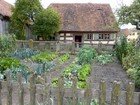
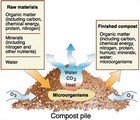
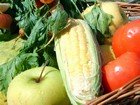
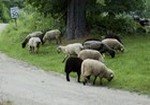

New! Comments
Do you have something of value to add? Leave me a comment in the box below.